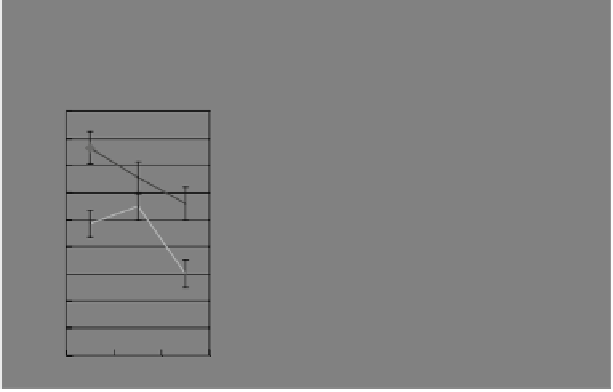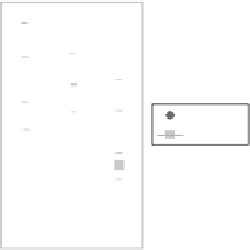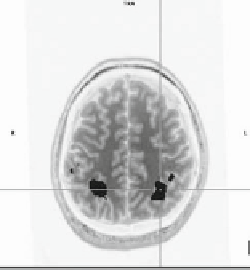Biomedical Engineering Reference
In-Depth Information
in the order of paradigm I, II and III. The responses in MT
increased from paradigm I to paradigm II and then decreased
with paradigm III. The response with paradigm III was even
smaller than with paradigm I and II. On the other hand, under
the low contrast condition, there was no statistically significant
activation in V1 with all the paradigms and the activation with
paradigm I in MT decreased extensively in comparison with that
under the high contrast condition. The response to the moving
pattern of paradigm II with the low contrast was large and was
not so different from with the high contrast case. The response
to paradigm III under the low contrast condition was larger than
that to paradigm II, i.e. the refractory suppression effect in the
response to paradigm III was reduced at the ISI, showing some
quicker recovery from the suppressed state. The observations of
the strong response to non-moving flickering input pattern of
paradigm I at high contrast and of the strong response to moving
single of paradigm II at low contrast indicate that there is in MT
an input non-specific to motion as well one specific to motion
(6)
.
The refractory response observed in V1 at the high contrast
pattern presentation was similar to those reported earlier
(2)
.An
interesting observation was that in MT, the paradigm III, paired
two moving patterns, yielded the response even below the level
with paradigm II where one moving pattern was shown once.
Similar highly reduced activity below the single pattern input
was also observed in various parietal areas such as BA7 (Brod-
mann area 7) and IPS (Intra parietal sulcus) (
Fig. 11.6
). There
was apparent violation of causality in these observations. In the
paired sequential presentation, the second event interfered with
FS: Paradigm
I
(flicker)
MS: Paradigm
II
(moving single)
MW: Paradigm
III
(moving double, ISI 200 msec)
1.8
1.6
1.4
1.2
1
BA7_HC
IPS_HC
0.8
0.6
0.4
0.2
0
FS
MS
MW
Fig. 11.6. Activation maps and paradigm-dependent BOLD signals at BA7 (Brodmann
area 7) and IPS (Intra Parietal Sulcus). HC: High contrast condition, LC: Low contrast
condition.







